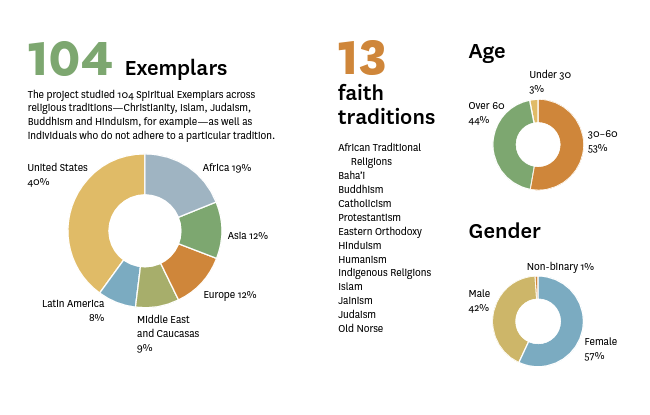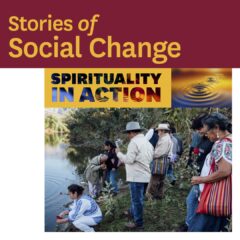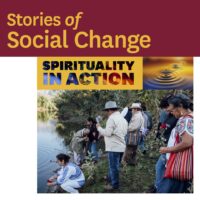The portraits displayed in the banners capture some of the 104 “Spiritual Exemplars” profiled by a team of journalists and researchers. You can explore their stories in this map.
Map application developed by: Bay Park Data Solutions
How to use the map: Scroll through the list and select “more details” to read about the person or access the full story. Or select a point on the map with a single click. You can use the buttons on the top of the map to filter by faith, expertise, country, region, age, race/ethnicity and gender.
Who is a spiritual exemplar?
The stories of the spiritual exemplars in the map were collected as part of the USC Center for Religion and Civic Culture’s global project on engaged spirituality, which took place from 2018-2023. CRCC defined a Spiritual Exemplar as:
- A living individual located anywhere in the world
- Inspired and sustained by spiritual values, beliefs or practices
- Significant impact that advances human flourishing
- Admired and emulated by others within and beyond their community
- Respects human rights, such as those defined by the Universal Declaration of Human Rights
Journalists often spent a week — or multiple Zoom calls during the pandemic — with an individual, their organization and community in order to understand what drives them to work for the benefit of others, often in the face of insurmountable obstacles.
Who are the exemplars?

Forty-two countries are represented in our sample, along with 13 different faith traditions. While our sample is skewed toward humanitarians from the United States, in part because the COVID-19 pandemic limited travel, well over half are from outside the US. Nearly 20 percent are from Africa, 12 percent from Asia, 12 percent from Europe, about 9 percent are from the Middle East and Caucasus, and 8 percent are from Latin America. Overall, slightly less than a quarter of the people profiled were white/European, and almost a quarter were Black/African.
On gender and age, we also have a good distribution. Fifty-seven percent of the exemplars were women. More than half are between 30 and 60 years of age. We initially speculated there might be more men than women, and that the sample would skew older than it did, since exemplars are often recognized later in life. The group includes both a Nobel Prize winner as well as little known figures, working day in and day out to improve their communities.

